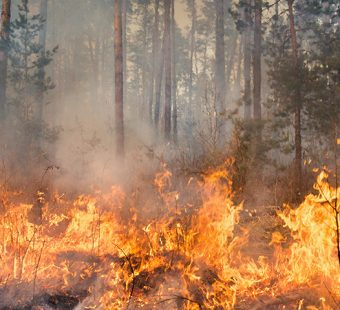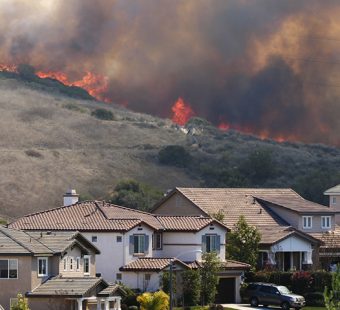
Fewer California Homeowners Non-Renewed in 2020, But More Pushed into FAIR Plan
Jeff Dunsavage, Senior Research Analyst, Triple-I (12/21/2021)
The number of California homeowners “non-renewed” in 2020 fell 10 percent from the previous year, according to a report by the California Department of Insurance.
The increased number and severity of wildfires increase in recent years had led to a sharp rise in insurers’ decisions not to renew homeowners policies in California or to write new business there. Increased wildfire risk due to warmer, drier summers is fueling the need for widespread mitigation. The California Department of Insurance and admitted insurance companies are working to find solutions to encourage homeowners and businesses to take mitigation measures while keeping insurance available and affordable in wildfire-risk areas.
The increased number and severity of wildfires increase in recent years had led to a sharp rise in insurers’ decisions not to renew homeowners policies in California or to write new business there. Increased wildfire risk due to warmer, drier summers is fueling the need for widespread mitigation. The California Department of Insurance and admitted insurers are working to find solutions to encourage mitigation measures by homeowners and businesses while keeping insurance available and affordable in wildfire risk areas. Homeowners whose risk is too great to obtain coverage in the private market are forced to buy coverage from the insurer of last resort, the California FAIR Plan, which has high premiums and limits on coverage.
Ricardo Lara, California’s insurance commissioner, in August issued a mandatory one-year moratorium on insurance companies from non-renewing or cancelling residential property insurance policies in wildfire areas. According to the report that moratorium was responsible for 80 percent of the statewide drop in non-renewals. At the same time, the report says, the number of policies written by FAIR increased for the second year, to a new high – so more clearly needs to be done.
California is the largest insurance market in the nation, and the non-renewals affect less than 3 percent of California policyholders. However, the number of consumers forced to obtain a policy from FAIR because they couldn’t find an insurance company willing to write them coverage increased by 49,049 policies in 2020, to 241,466 new and renewed policies, the report says.
“More communities are rolling up their sleeves to protect their homes from wildfire,” Commissioner Lara said in a press release. “And more insurance companies are heeding my call to give incentives for home safety.”
Commissioner Lara implemented a series of moratoriums on non-renewals under a state law he wrote when he was a member of the California State Senate, protecting more than 1 million policyholders in 2019 and 2.4 million in 2020 who lived in the perimeter or adjacent to a governor-declared wildfire disaster. Areas in the state under moratoriums saw non-renewals fall by nearly 20 percent, compared to a less than 3 percent decrease in areas not under moratorium.
Federal funding provided in this year’s infrastructure act is expected to assist the state’s resilience efforts. The measure includes:
- $600 million to convert 1,000 seasonal federal wildland firefighters to permanent year-round positions and increase pay for federal firefighters by up to $20,000 per year;
- $3.3 billion for critical wildfire risk-reduction efforts;
- $5 billion for utilities and grid operators to bury power lines and install fire-resistant technologies to prevent wildfires, as well as expand use of micro-grids to reduce the impact of power shutoffs;
- $3.5 billion for the weatherization assistance program to help homeowners make energy-efficiency and fire-resistance improvements to their homes.
The pending “Build Back Better Act” includes:
- $14 billion for hazardous fuels reduction on national forests, focusing on areas around at-risk communities and using prescribed burning;
- $1 billion for collaborative forest management projects on national forests;
- $3 billion in grants for state, tribal and local governments and nonprofit organizations to reduce the risk of wildfires on nonfederal lands,implement community wildfire protection plans, purchase firefighting equipment, and provide firefighter training;
- $775 million for grants under the wood innovations grant program, which helps with the development and construction of new facilities to use small-diameter wood generated by hazardous fuel reduction projects;
- $400 million in grants to state, tribal and local governments and nonprofit organizations for recovery of burned forested areas, state fire assistance and volunteer fire assistance programs;
- $150 million for EPA grants to communities to address wildfire smoke;
- $500 million for wildfire management by Bureau of Land Management and Park Service.



